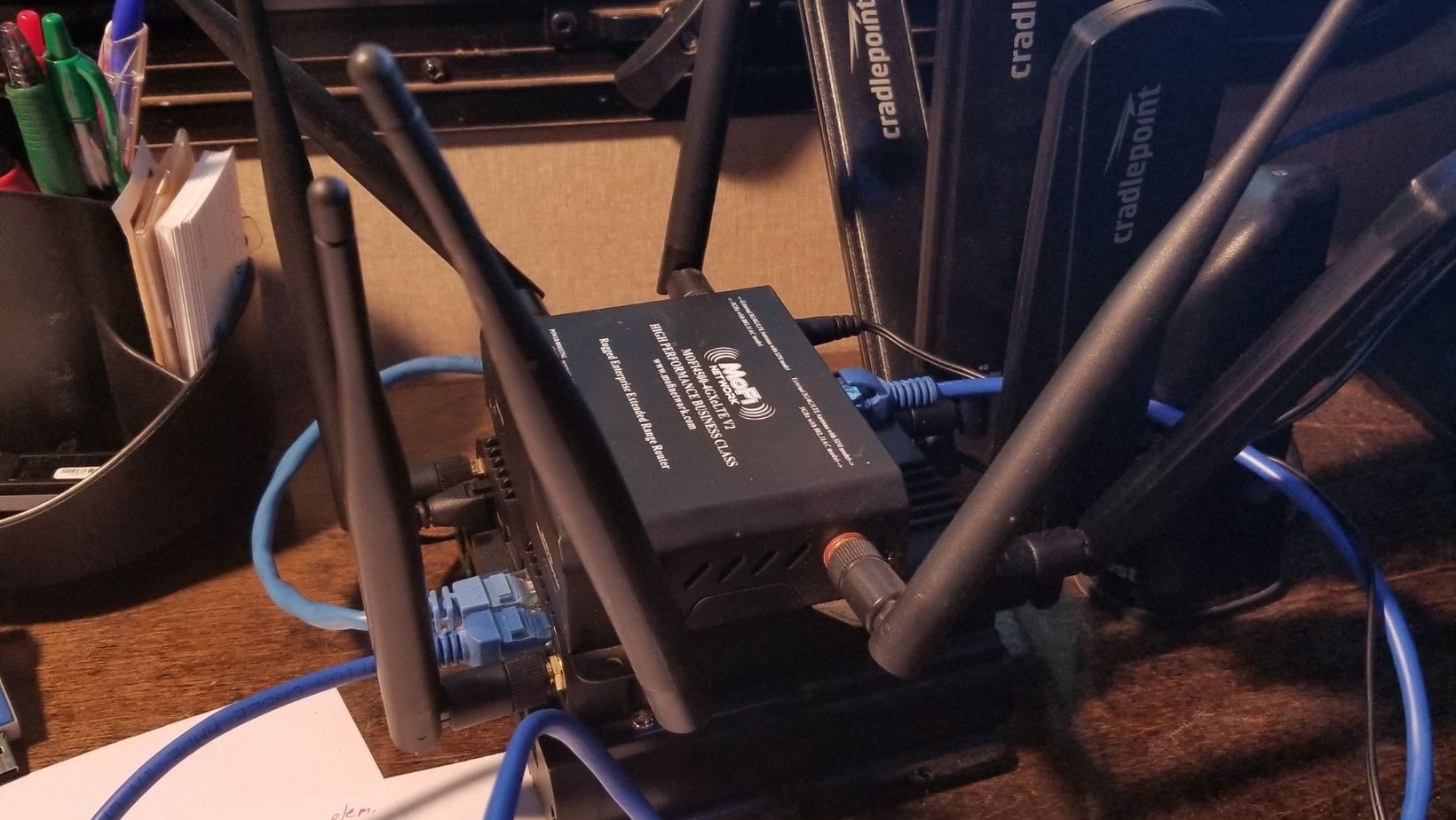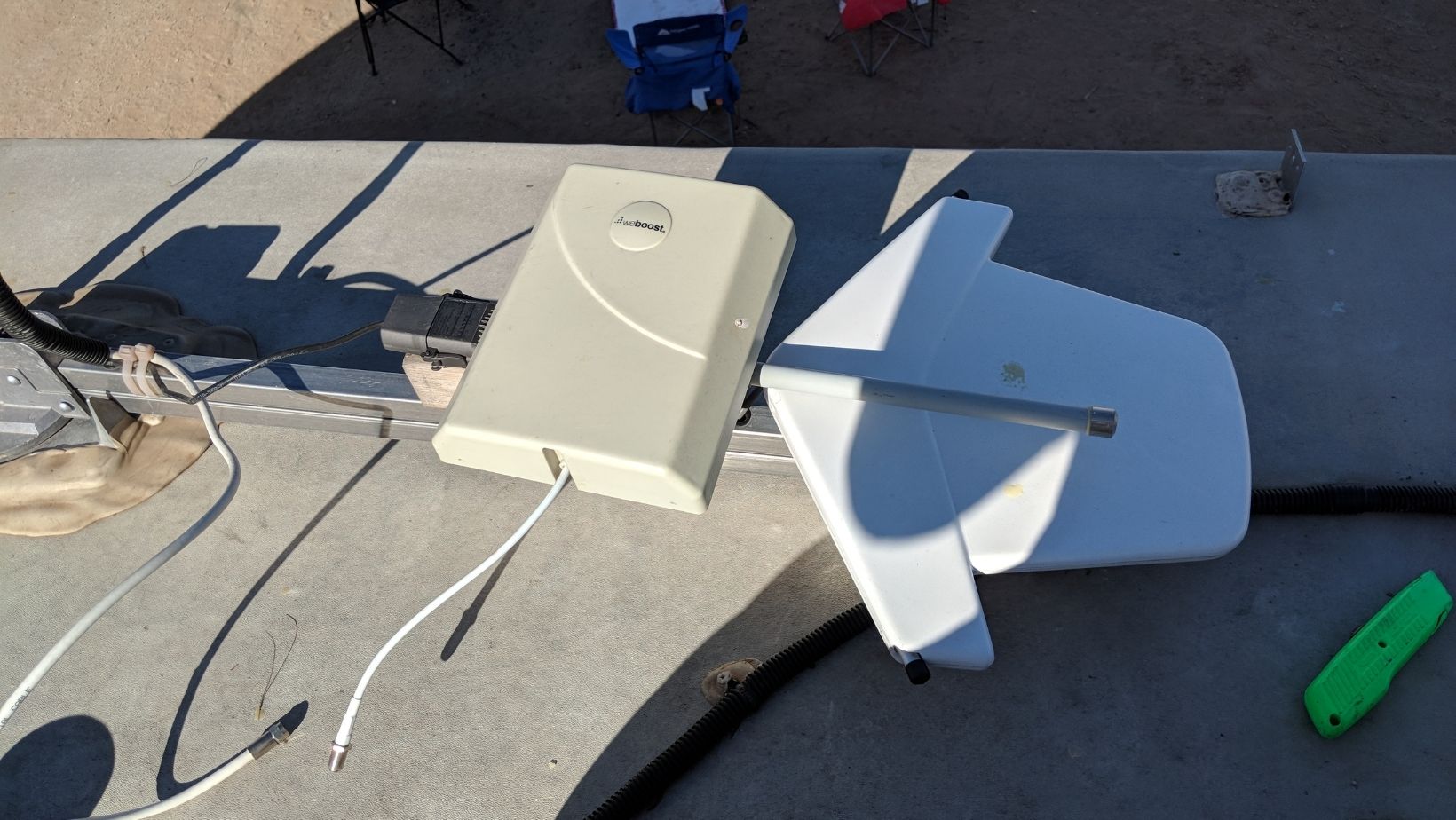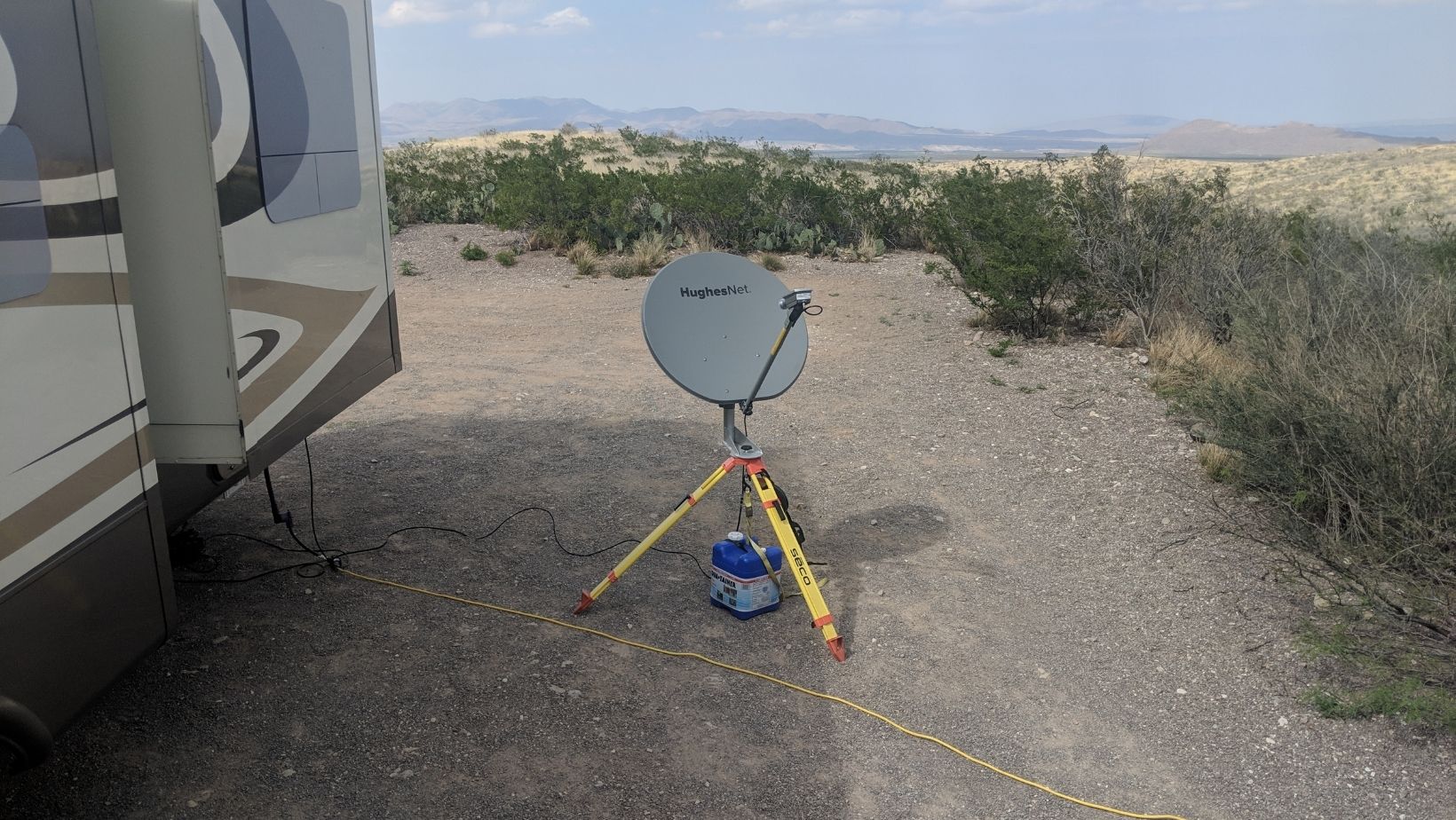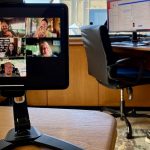Setting Up Your Mobile Internet for the Beginner RVer

One of the first questions new RVers ask is “how do I get internet on the road?” There are 3 main options to consider when figuring out internet for the beginner RVer: campground WiFi, cell phone/hotspot, and satellite. The details of each can be complex and a little dull so grab a coffee and let’s go!
So, you’ve decided that this RV lifestyle is for you, but you have a hankering to stay connected to the outside world or are lucky enough to have a remote work opportunity. Well, my goal here today is for you to get out and be connected! While I could go on and on for hours putting the most caffeinated of individuals to sleep with the nitty gritty details, I am instead going to boil it down to the essentials.
Campground WiFi- Consider Yourself Warned
Unfortunately, many campgrounds (most, really) haven’t got the memo that modern RVers require a decent amount of bandwidth to have an enjoyable stay. Toss in the desire to stream a show or two and forget it. To put it bluntly: if you depend entirely on campground WiFi, you are going to have a bad time. Even if a campground offers it, you will likely run into buffering issues, slow speeds during peak usage each day, and inconsistent availability, as most parks aren’t set up to offer equal access throughout their property. There is also the annoyance of telling individual devices how to connect to each WiFi network after each move.
Useful Equipment for Using Campground WiFi
If you want to make the best of campground WiFi when you happen to find the rare network that is actually usable, you will want a wireless router that supports connecting to an external wireless network and then sharing it with your existing network. This is commonly known as “WiFi as a WAN”. Take it a step further for improved performance and go with a router that supports an external antenna (or one that is entirely outside).
Cellular Internet & Hotspots for Beginners
These are devices that utilize a phone carrier’s cell phone tower to provide you with a connection to the internet. Before heading to a new spot, it’s a good idea to try and determine if a location you want to camp in has service before you arrive so you know what to expect. When it comes to camping spot research, websites/apps like https://www.campendium.com are a great way to tell if there is cell coverage in a location by reading reviews for locations you are considering (this article is attempting to remain brand-independent, but it’s just too darn good to not list it). Carrier specific coverage maps also give you a rough idea if you are likely to get a signal at your spot. Having more than one internet option once you get there is a must. Each cell tower for a given carrier gives you a different experience depending on internal and external factors such as how many customers are currently using the tower, and the type of connection that the tower has to the outside world (fiber, digital microwave, satellite, etc). To put it another way: just because you have a great signal doesn’t mean you will have enough bandwidth (speed) to do whatever it is you are using the internet for. The famous/infamous RV wintering locale of Quartzsite, AZ is a great example of this, if you have only big red as your source of internet during your stay there…you are going to have a bad time and the goal of this article is to prevent that!
Equipment to Help You Get the Most from Your Hotspot
Device options for using a carrier cell data plan are numerous, but can be boiled down to 3 categories each typically being more expensive than the one before:
- Cell phone: Utilizing your phone’s built-in hotspot to create your own wifi network that other devices can connect to. Most, but not all carriers limit the amount of data that you can use with a phone’s hotspot. Cell phones are typically designed to be thin and small, and as such, they also can suffer from signal strength issues (more on this later). Cell phone batteries are also on the smaller side and as this is an energy-intensive task, battery life will be greatly reduced.
- Dedicated Hotspot: These are dedicated cellular devices sold mainly by providers with the intent of providing internet to multiple devices, typically over WiFi. Most cell carriers will require you to have a hotspot-specific plan. When deciding on a plan, be sure to research/read all of the fine print for items such as data caps (how much data you can use in a billing cycle), network management rules (once you use a certain amount of data you may have your speeds reduced for the remainder of the cycle). Many have ports on them for utilizing an external antenna that you can use for obtaining a better signal. As the options for hotspot plans change so frequently, I am not going to make any specific examples here.
- Aftermarket Devices: Both the cost and range of options here are near limitless. These devices are typically a magnitude of cost higher but can bring numerous advantages along with them. These devices often have the ability to connect to multiple sources of internet at the same time and decide which is best to use or even spread the usage of more than one device in your rig across different internet sources. They almost always require external antennas and as such can have some of the best performance.
- Cellular Booster: What is it? Well in layman’s terms it steps in between your cell phone and the tower to improve connectivity between the two IF there is a weak signal issue. If the tower is overloaded or troubled in some other way it’s NOT going to help you. There are a myriad of boosters out on the market and the options are diverse depending on the size of your rig, the amount of boosted area that you want to be covered inside the rig, and the amount of “boost” you are looking for. Our personal experience has led us to expect to place the device you are using directly in front of the booster output for best performance. The last factor to consider for boosters is the type of external antenna for the booster that you will be using: directional or omnidirectional. Directional antennas give you the best performance, but must be pointed each time you move your RV, while omnidirectional atennas allow for a permanent mount that is more set it and forget it. The most important factor of cellular boosters is that you must be in a weak signal area for a booster to help you. If there is no signal, you can’t make something from nothing with it!
Satellite Internet & Current Technologies
So you want to have an internet connection in a beautiful spot that has no cell signal or the tower doesn’t have enough bandwidth? Satellite internet is a lesser known/used option. I wrote a more detailed article on this for Xscapers, but I’ve shared a summary below.
Satellite internet can be boiled down into two basic technologies: Geostationary (GEO)– a user’s dish pointing to a fixed satellite in the sky 20k+ miles up in the sky, and Low Earth Orbit (LEO)–a constellation of satellites at a far lower altitude (just a few hundred miles up) that are constantly moving overhead. LEO requires the user’s equipment to “hop” from satellite to satellite overhead as they pass by. At the time of writing this article, no high-speed LEO options were yet widely available however several networks are in development, the closest to release being the SpaceX Starlink offering. I have been fortunate enough to be a Starlink BETA tester for the last few months, and witnessing the evolution and improvements has been fascinating. It still is not ready to be your primary source of internet, however what it holds for the future of connectivity is promising. Although the new LEO satellite internet options are currently the cool kid on the block, this technology is still in its infancy and cellular remains the go-to cost-effective and convenient option for many.
Still Awake? This article is far from exhaustive but hopefully will get you started on your remote internet connectivity decisions. In conclusion, I am reminded of the Chinese proverb that goes something like this: the journey of a thousand miles begins with a solid internet set up. See you down the road!

Author
Kevin Ridley SKP #129123
Kevin has been full-time RVing since May 2016 with his wife Emma and two daughters (ages 6 and 2). Shortly after launching, their second daughter was born quite literally on the road! Since going full time this family of 4 has visited most of the lower 48 states and some of Mexico, and traveled internationally extensively before having kids. Kevin is a “retired” electrical engineering consultant, homeschooling dad, Convergence groupie, and fan of all things outdoors. Emma and Kevin maintain a small blog about their adventures for family and friends ‘back home in Maine’ at: wickedwanderers.net




 Previous Post
Previous Post Next Post
Next Post